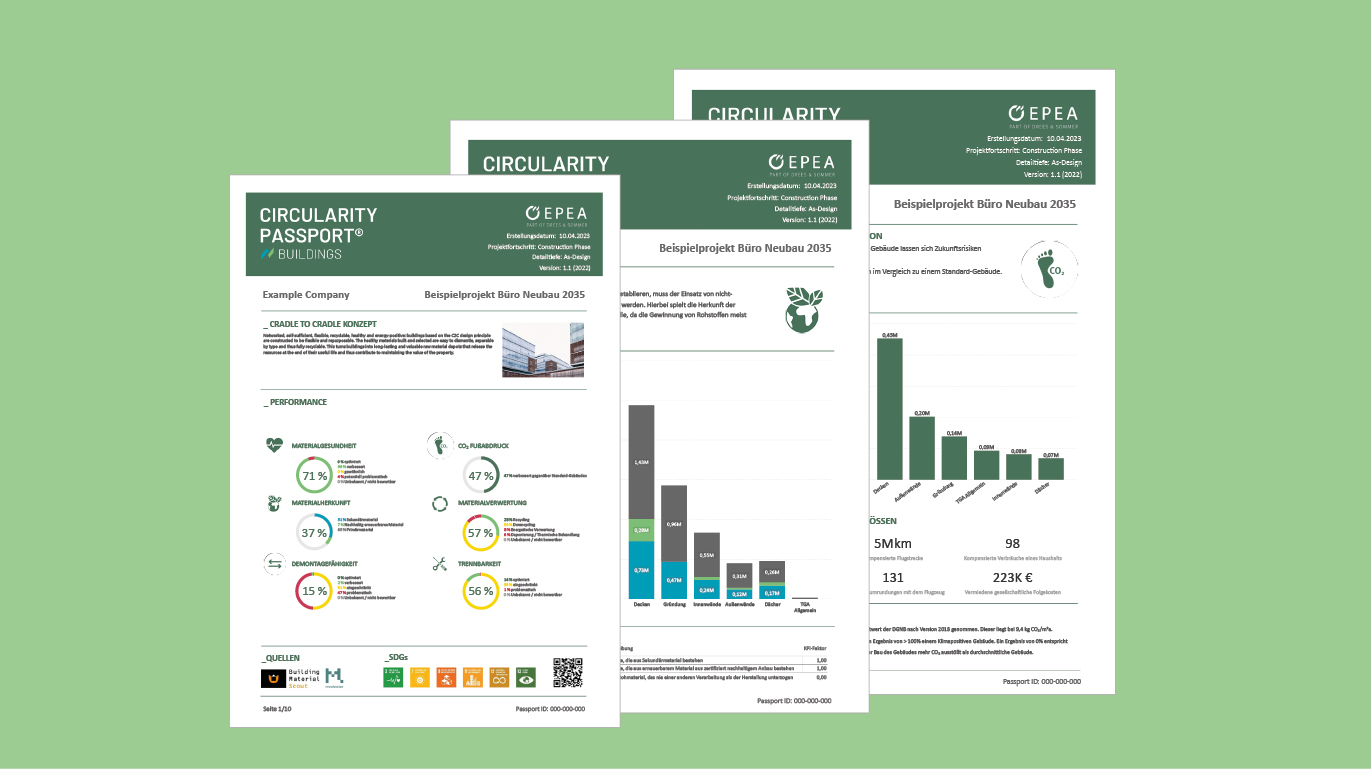



In order to promote the material cycle in the construction and real estate sector, EPEA presents the first detailed analysis of building material passports at national level. These analyses show which raw materials are contained in a building and in what quantity. It is also important to know where these materials come from and whether they can be returned to high-quality cycles in the future.
For eight years, EPEA has been issuing material passports for all types of buildings under the name “Circularity Passport® Buildings”. The idea developed in 2015 from the EU research project BAMB (Buildings As Material Banks). Since then, EPEA has created and continuously developed over 100 detailed resource passes from planning to completion.
Since 2021, EPEA has stored all life cycle assessments and Circularity Passports® in an internal database. In a unique analysis, the Environmental Consulting Institute has now evaluated around 50 of them and derived important findings for use nationwide. This information is not only helpful for documentation, but is also crucial for environmentally friendly planning. Through close cooperation with the Madaster platform, the models available on the market can be harmonized and the financial value determined.
A building is rated high if the materials come from renewable or recycled sources. In addition, the material passport assesses the CO2-Footprint, environmental balance and other categories such as material types and quantities, pollutant content, recyclability, separability of materials and disassembly of components.
The construction sector produces most waste in industrialized countries. An upcoming European law could force the establishment of material cycles and a digital material ID. When planning buildings, materials would then have to be carefully selected for the first time from the point of view of resource conservation and recyclability. By using measurable parameters, planning teams have the opportunity to optimize their buildings in terms of the circular economy. This benefits a true circular economy based on the Cradle to Cradle® design concept.
The free dossier can be downloaded here: Dossier Construction Industry in Waste Dilemma (dreso.com)